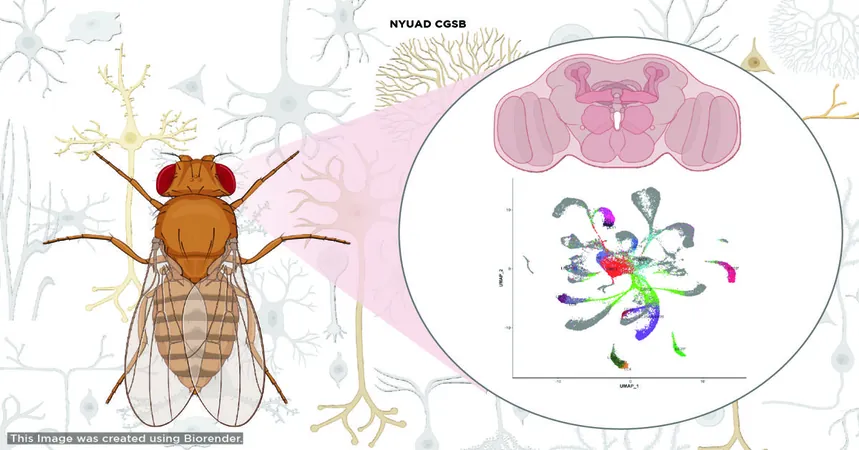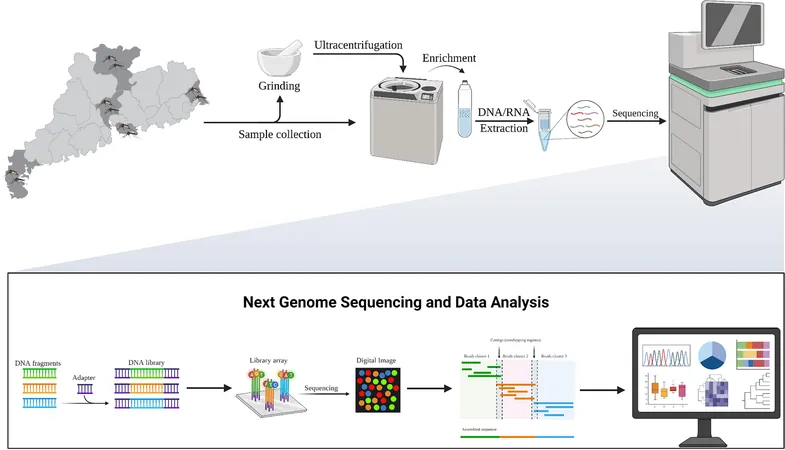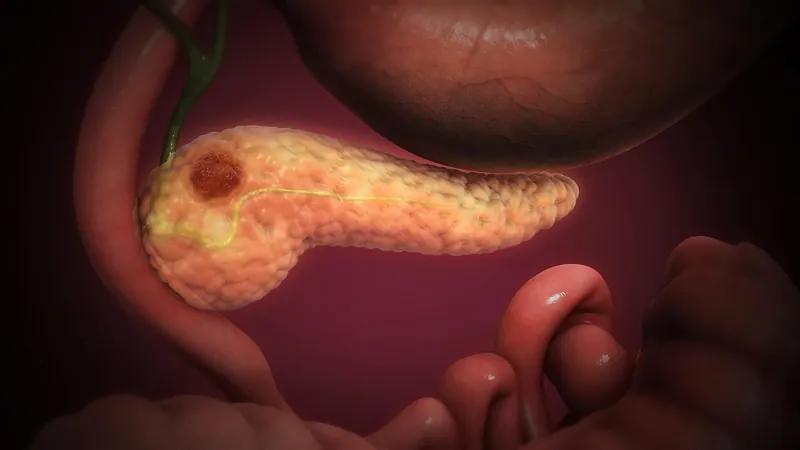
Tiny Fruit Flies Reveal Secrets of Vision That Could Transform Brain Research
2025-06-03
Author: Rajesh
Unlocking the Secrets of Brain Function Through Fruit Flies
In a groundbreaking study from NYU Abu Dhabi and New York University, scientists are turning our understanding of vision on its head, and it all starts with the tiny Drosophila melanogaster—better known as the fruit fly. These seemingly insignificant insects are proving to be a goldmine in unraveling the mysteries of how our brains process visual information and drive behavior.
A Closer Look at Fruit Fly Brains
Published in the esteemed journal Nature Communications, the research dives deep into specialized neurons in the fruit fly brain known as lobula columnar neurons (LCNs). These neurons play a pivotal role in how flies perceive their surroundings, ultimately influencing their survival. But the real question that captured the researchers' interest was: where do these crucial neurons come from?
Utilizing cutting-edge single-cell mRNA sequencing, scientists tracked gene activity in individual cells and made a startling discovery—these vision-oriented neurons do not share a singular origin. Instead, they arise from four distinct brain regions, each charting its own unique developmental path.
A Revolutionary Finding
This groundbreaking revelation indicates that a group of morphologically similar neurons can emerge from multiple progenitor sources, a first in scientific literature. Senior Scientist Rana Eldanaf emphasized, "This finding suggests an evolutionary adaptability where different brain areas independently contribute to parallel visual pathways, potentially enhancing the fruit fly's ability to navigate its environment."
Broad Implications for Neuroscience
While the study is focused on fruit flies, the implications could resonate across species, offering a more intricate understanding of how complex neural circuits are constructed. This research may also shed light on neurodevelopmental disorders linked to neuronal formation errors—understanding how diverse stem cells contribute to neuron variety could pave the way for innovative regenerative therapies.
By peering into the brains of fruit flies, researchers are uncovering universal principles that could redefine our grasp of brain function and development. This is just the beginning of what promises to be an exciting era in neuroscience, potentially leading to breakthroughs in treating conditions that affect thousands worldwide.




 Brasil (PT)
Brasil (PT)
 Canada (EN)
Canada (EN)
 Chile (ES)
Chile (ES)
 Česko (CS)
Česko (CS)
 대한민국 (KO)
대한민국 (KO)
 España (ES)
España (ES)
 France (FR)
France (FR)
 Hong Kong (EN)
Hong Kong (EN)
 Italia (IT)
Italia (IT)
 日本 (JA)
日本 (JA)
 Magyarország (HU)
Magyarország (HU)
 Norge (NO)
Norge (NO)
 Polska (PL)
Polska (PL)
 Schweiz (DE)
Schweiz (DE)
 Singapore (EN)
Singapore (EN)
 Sverige (SV)
Sverige (SV)
 Suomi (FI)
Suomi (FI)
 Türkiye (TR)
Türkiye (TR)
 الإمارات العربية المتحدة (AR)
الإمارات العربية المتحدة (AR)